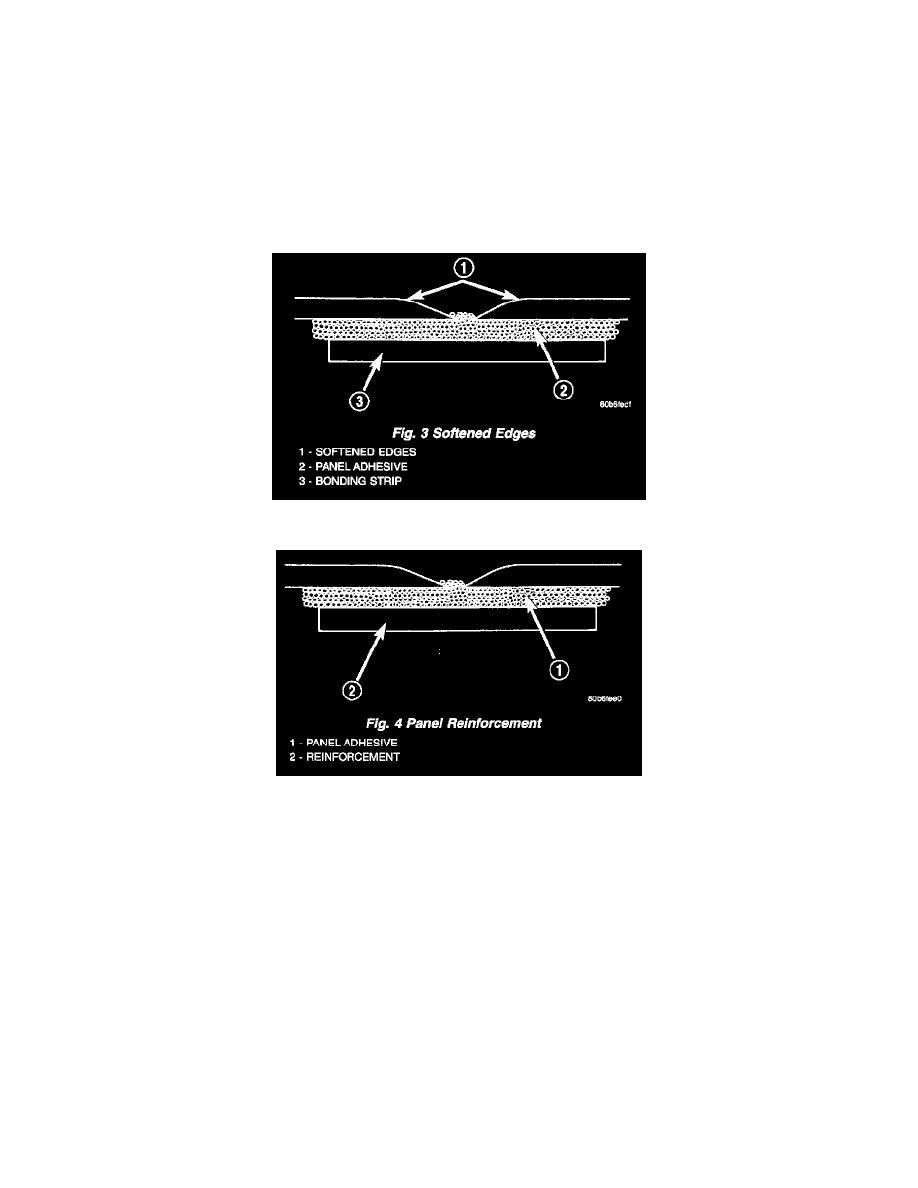Town & Country LWB AWD V6-3.8L VIN L (2000)

When bonding SMC or RTM panels, use a two-part epoxy adhesive. Properly mix parts A and B, and apply it to the panels being repaired. Be sure that
enough adhesive has been applied to allow squeeze out and to fill the full bond line. Once the pieces have been brought together, do not move them until
the adhesive is cured. The assembly can be held together with clamps, rivets, etc. A faster cure can be obtained by heating with a heat lamp or heat gun.
After the parts have been bonded and have had time to cure, rough sand the seam and apply the final adhesive filler to the area being repaired.
Smooth the filler with a spatula, wooden tongue depressor, or squeegee. For fine texturing, a small amount of water can be applied to the filler surface
while smoothing. The cured filler can be sanded as necessary and, as a final step, cleanup can be done withy soapy water. Wipe the surface clean with a
dry cloth allowing time for the panel to dry before moving on with the repair.
PANEL REINFORCEMENT
Fig. 3
Fig. 4
Structural repair procedures for rigid panels such as Sheet Molded compound (SMC) or Resin Transfer Molded (RTM) with large cracks and holes will
require a reinforcement backing. Reinforcements can be made with several applications of glass cloth saturated with epoxy structural adhesive, semirigid
or flexible repair materials should be used for semirigid or flexible part repairs (Fig. 3) and (Fig. 4). Open meshed fiberglass dry wall tape can be used to
form a reinforcement. The dry wall tape allows the resin to penetrate through and make a good bond between the panel and the epoxy adhesive.
Structurally, the more dry wall tape used, the stronger the repair.
Another kind of repair that can be done to repair large cracks and holes is to use a scrap piece of similar plastic and bond with structural adhesive. The
reinforcement should cover the entire break and should have a generous amount of overlap on either side of the cracked or broken area.
